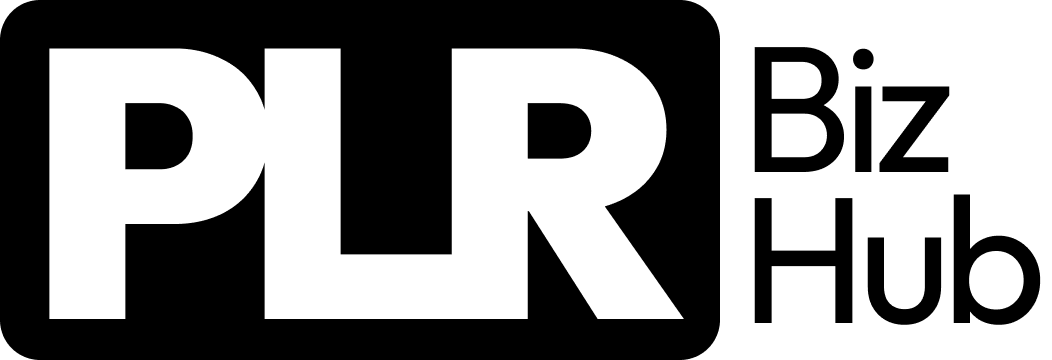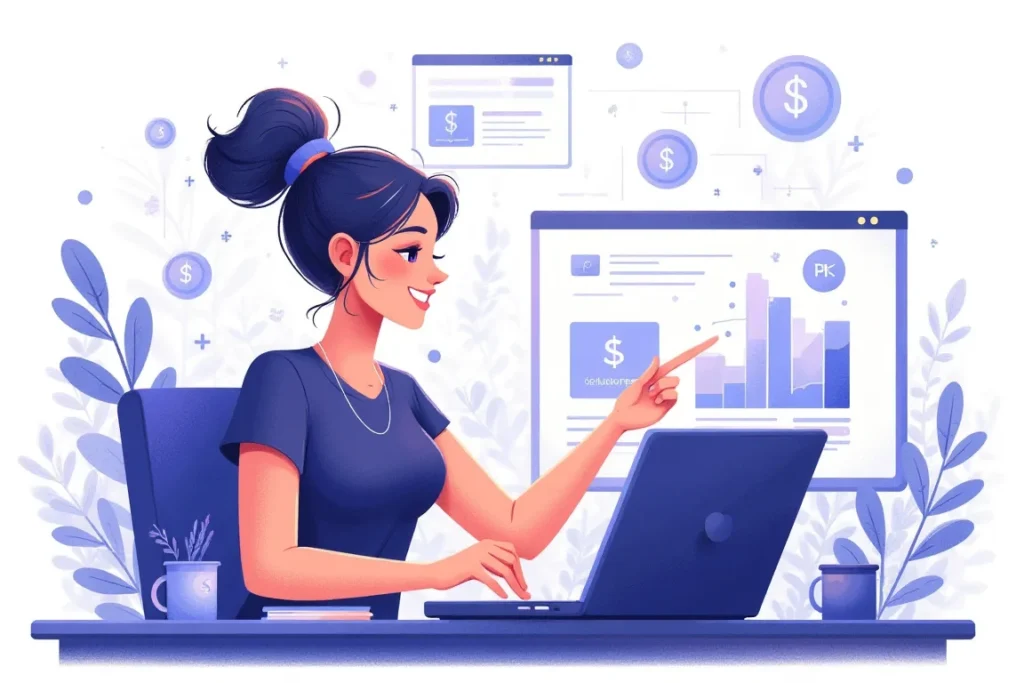Staring at your PLR digital products wondering what price tag will actually get them sold? You’re not alone in this pricing puzzle. Most people grab quality PLR content, slap a random price on it, then wonder why their sales are flatlatter than yesterday’s soda. The harsh truth? Incorrect pricing kills more PLR businesses than bad content ever could. But here’s what most sellers miss: how to price PLR digital products to sell isn’t about guessing—it’s about strategic positioning that transforms basic PLR into profit-pulling powerhouses.
Key Takeaways
Understanding how to price PLR digital products for profit requires strategic thinking beyond simple cost calculations. Here’s your roadmap to profitable PLR pricing:
- Budget tier pricing ($17-37) works for basic PLR with minimal enhancements and simple bonus materials
- Mid-tier positioning ($47-97) suits enhanced PLR products with valuable bonus packages and templates
- Premium pricing ($97-197) applies when you’ve added exclusive bonuses, community access, or consultation elements
- Value-based pricing focuses on customer outcomes rather than production costs for maximum profitability
- Competitor research provides market positioning insights but shouldn’t be your only pricing factor
- Tiered pricing models cater to different customer segments while maximizing overall revenue
- Bundle strategies increase average order value by combining related PLR products
- Psychological pricing techniques like charm pricing ($97 vs $100) influence buyer behavior
- Market research reveals what your specific audience will pay for transformation-focused solutions
Looking for PLR products that are already optimized for profitable pricing? Ready-to-Sell Digital Products on plrbizhub.com come with pricing guides and positioning strategies, saving you hours of research while helping you launch your profitable digital business immediately.
Understanding PLR Product Value Beyond Content
When I first started selling PLR digital products, I made the classic mistake of pricing based purely on what I paid for the content. Big mistake. Profitable PLR pricing starts with understanding that customers don’t buy PLR products—they buy solutions to their problems.
The most successful PLR sellers position their products as transformation vehicles, not information packages. This mindset shift changes everything about how you approach pricing. Instead of thinking “I paid $27 for this PLR, so I’ll sell it for $47,” you start thinking “This PLR helps people lose weight/make money/organize their life—what’s that transformation worth?”
Market Research Strategies For PLR Pricing
Competitor analysis forms the foundation of smart PLR pricing, but it’s not about copying prices. I spend time researching what similar products sell for across different platforms, then position my PLR products strategically within that range.
Start by identifying direct competitors—people selling similar PLR products to your target audience. Then examine indirect competitors—original course creators and coaches solving the same problems. This gives you a complete picture of your market’s pricing landscape.
Customer surveys reveal invaluable pricing insights. Ask your email list what they’ve spent on similar products and what price points feel reasonable for specific outcomes. This direct feedback often surprises me with how much people are willing to invest in solutions.
Platform research across different marketplaces shows pricing variations. The same PLR content might sell for $17 on one platform and $97 on another, depending on positioning and audience quality.
Useful Articles:
The Three-Tier PLR Pricing Framework
Most successful PLR sellers use a three-tier pricing structure that caters to different customer segments while maximizing revenue potential.
Budget Tier ($17-37)
This entry-level pricing works well for basic PLR products with minimal customization. Your offer includes the core PLR content plus simple bonuses like checklists or quick-reference guides. This pricing attracts price-sensitive customers and serves as an entry point into your product ecosystem.
Budget tier positioning works best when you’re building an email list or testing market demand for specific topics. The lower price point reduces buyer resistance while still generating profit margins that justify your time investment.
Mid-Tier Positioning ($47-97)
The sweet spot for most PLR products lies in this range. Mid-tier pricing allows you to enhance your PLR with valuable bonus materials, templates, worksheets, and additional resources that justify the higher price point.
This pricing tier typically generates the highest conversion rates because it balances affordability with perceived value. Customers feel they’re getting a comprehensive solution without breaking their budget.
Premium Pricing ($97-197)
Premium PLR positioning requires significant value additions beyond the original content. This might include exclusive bonuses, community access, email support, or consultation calls. The key is ensuring your total package justifies the premium price point.
Premium pricing works best when you’ve established authority in your niche and have testimonials or case studies supporting your product’s effectiveness. This tier generates the highest profit margins per sale.
Value-Based Pricing For Maximum Profitability
Value-based pricing focuses on customer outcomes rather than production costs. This approach consistently generates higher profits because it aligns your pricing with the transformation your customers desire.
When implementing value-based pricing, I focus on the specific problems my PLR products solve and the measurable outcomes they deliver. A PLR product about productivity isn’t just information—it’s time saved, stress reduced, and goals achieved.
Pain point analysis helps determine value-based pricing. If your PLR helps people save 10 hours per week, what’s that time worth to your target audience? A busy entrepreneur might value those 10 hours at $500, making a $97 price point seem like a bargain.
Outcome positioning in your marketing materials supports higher prices. Instead of describing features (“50-page ebook”), focus on results (“cut your daily planning time from 30 minutes to 5 minutes”).
Psychological Pricing Techniques That Work
Charm pricing ($97 instead of $100) remains effective because our brains process these prices as significantly lower. This isn’t manipulation—it’s understanding how customers naturally evaluate price points.
Anchoring strategies involve presenting higher-priced options first, making your actual offer seem more reasonable. If you mention a $197 competitor product before revealing your $97 price, the contrast makes your price feel like a steal.
Bundle pricing psychology suggests customers prefer packages over individual items. Instead of selling three PLR products separately for $29 each, bundle them for $67. The customer saves money while you increase average order value.
Scarcity pricing creates urgency through limited-time offers or exclusive bonuses. Since PLR products don’t have natural scarcity, you create it through special pricing or time-sensitive bonuses.
Useful Articles:
Tiered Pricing Models For Different Customer Segments
Good-Better-Best pricing maximizes revenue by offering three clear options that cater to different customer needs and budgets.
The “Good” option includes your basic PLR product with essential materials. This serves price-sensitive customers and provides an entry point into your product line.
The “Better” option—your primary seller—includes enhanced PLR plus valuable bonuses. Most customers choose this middle option, making it your revenue workhorse.
The “Best” option includes everything plus exclusive access, community membership, or personal consultation. While fewer people choose this option, it significantly increases your average order value.
This structure works because it gives customers choice while guiding them toward your preferred option through strategic positioning.
Bundle Strategies That Boost Average Order Value
Strategic bundling combines related PLR products into higher-value packages that justify premium pricing. Instead of selling individual PLR products for $27 each, create themed bundles that command $67-97 price points.
Complementary product bundles work particularly well. If you have PLR about email marketing, social media, and content creation, bundle them as a “Complete Digital Marketing Package” for significantly more than the sum of individual prices.
Seasonal bundling aligns your PLR products with natural buying cycles. New Year bundles focus on transformation and goal-setting. Back-to-school bundles emphasize productivity and organization. Holiday bundles target gift-giving opportunities.
Value stacking in your bundle presentations shows the individual value of each component, then reveals your bundle price as a significant savings. This presentation format increases perceived value while justifying higher prices.
Pricing For Different PLR Product Types
PLR ebooks typically price in the $17-67 range, depending on length, topic, and bonus materials. Shorter guides work well at lower price points, while comprehensive ebooks can command premium pricing.
PLR course materials justify higher prices ($67-197) because they provide structured learning experiences. Course PLR often includes videos, worksheets, and templates that increase perceived value.
PLR templates and graphics price based on usage rights and design quality. Basic template packages might sell for $27-47, while comprehensive design suites can command $97+ price points.
PLR software and tools typically warrant premium pricing ($97-297) because they provide ongoing utility beyond one-time consumption. Software PLR often includes resell rights that justify higher investments.
Useful Articles:
Testing And Adjusting Your PLR Pricing Strategy
Price testing reveals optimal pricing for your specific audience and products. Start with research-based pricing, then test variations to find your profit-maximizing price point.
A/B split testing different price points for the same PLR product shows which generates higher revenue. Test pricing changes over weeks, not days, to account for natural sales fluctuations.
Customer feedback provides insights into price sensitivity and perceived value. If customers consistently comment that your products are underpriced, you’re leaving money on the table.
Sales data analysis reveals patterns in customer behavior across different price points. Track not just conversion rates but also customer lifetime value and repeat purchase behavior.
Seasonal adjustments account for natural buying patterns in your niche. Some PLR products sell better during specific seasons, justifying temporary price increases during high-demand periods.
Creating Perceived Value Through Presentation
Professional presentation significantly impacts pricing flexibility. PLR products with custom covers, professional formatting, and cohesive branding can command higher prices than basic PLR presentations.
Sales page optimization affects how customers perceive value and price. Clear benefit statements, professional design, and social proof support higher pricing by building confidence in your offer.
Bonus positioning within your sales materials creates additional perceived value without increasing costs. Present bonuses as separate items with individual values, then show the total package savings.
Guarantee offers reduce buyer risk and support premium pricing. Strong guarantees demonstrate confidence in your PLR products while removing purchase barriers that price-sensitive customers face.
Platform-Specific Pricing Considerations
Your own website provides complete pricing control and higher profit margins. Without platform fees, you can offer competitive prices while maintaining profitability.
Third-party marketplaces often require competitive pricing due to easy comparison shopping. However, these platforms provide built-in traffic that may justify slightly lower margins.
Social media sales typically work best with impulse-friendly pricing ($17-47) that encourages quick purchase decisions. Higher-priced PLR products need more comprehensive sales processes.
Email marketing promotions allow for dynamic pricing strategies including flash sales, subscriber discounts, and exclusive pricing for different list segments.
Long-Term Pricing Strategy Development
Market positioning determines your long-term pricing strategy. Position yourself as the budget option, premium provider, or value leader based on your business goals and target audience.
Brand development supports higher pricing over time. As you build authority and customer trust, your PLR products can command premium prices based on your reputation.
Product line expansion allows for cross-selling and upselling strategies that increase customer lifetime value beyond individual PLR product sales.
Customer relationship building through excellent service and valuable content creates loyal customers willing to pay premium prices for your PLR products.
Smart PLR pricing isn’t about finding the perfect number—it’s about creating irresistible value propositions that make your prices feel like bargains. Focus on customer outcomes, test strategically, and never compete solely on price.




